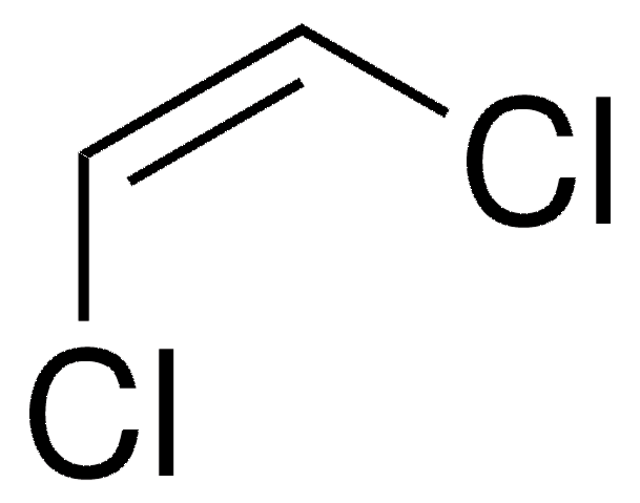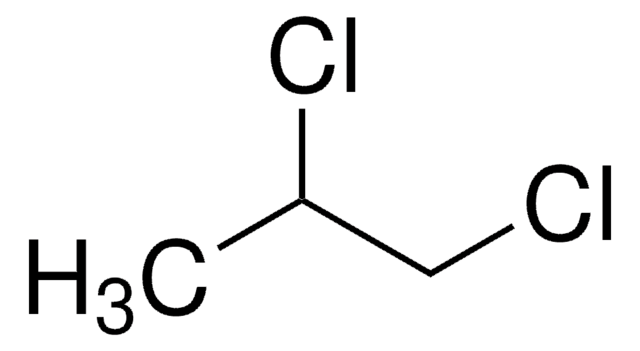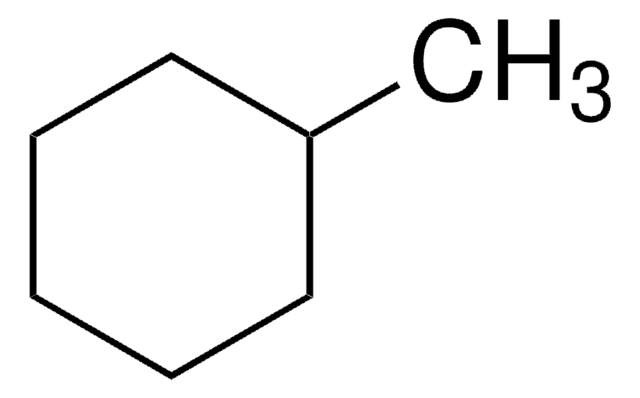D62403
1,2-Dichloroethylene, mixture of cis and trans
98%
Synonyme(s) :
1,2-Dichloroethene, Acetylene dichloride, sym-Dichloroethylene
About This Item
Produits recommandés
Pression de vapeur
5.32 psi ( 20 °C)
Niveau de qualité
Pureté
98%
Forme
liquid
Indice de réfraction
n20/D 1.447 (lit.)
Point d'ébullition
48-60 °C (lit.)
Pf
−57 °C (lit.)
Densité
1.265 g/mL at 25 °C (lit.)
Chaîne SMILES
Cl\C=C\Cl
InChI
1S/C2H2Cl2/c3-1-2-4/h1-2H/b2-1+
Clé InChI
KFUSEUYYWQURPO-OWOJBTEDSA-N
Vous recherchez des produits similaires ? Visite Guide de comparaison des produits
Catégories apparentées
Application
- Chloro-enynes from terminal alkynes via Sonogashira coupling.
- Trichloroethyl alkyl ketones by reacting with acyl chlorides via Friedel-Crafts reaction in the presence of aluminum chloride.
- (Ethenediyl)bis[thiazole] via Pd-catalyzed Stille-coupling reaction with 2-(tributylstannyl)thiazole.
À utiliser avec
Mention d'avertissement
Danger
Mentions de danger
Conseils de prudence
Classification des risques
Acute Tox. 4 Inhalation - Aquatic Chronic 3 - Flam. Liq. 2
Code de la classe de stockage
3 - Flammable liquids
Classe de danger pour l'eau (WGK)
WGK 2
Point d'éclair (°F)
42.8 °F - closed cup
Point d'éclair (°C)
6 °C - closed cup
Équipement de protection individuelle
Eyeshields, Faceshields, Gloves
Certificats d'analyse (COA)
Recherchez un Certificats d'analyse (COA) en saisissant le numéro de lot du produit. Les numéros de lot figurent sur l'étiquette du produit après les mots "Lot" ou "Batch".
Déjà en possession de ce produit ?
Retrouvez la documentation relative aux produits que vous avez récemment achetés dans la Bibliothèque de documents.
Les clients ont également consulté
Notre équipe de scientifiques dispose d'une expérience dans tous les secteurs de la recherche, notamment en sciences de la vie, science des matériaux, synthèse chimique, chromatographie, analyse et dans de nombreux autres domaines..
Contacter notre Service technique









